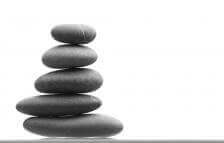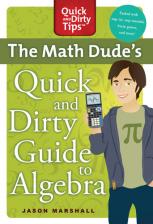How to Round Numbers (Part 2)
How do you round a number like π=3.14159 to the nearest thousandths place? Normally, the 5 means you round up. But are there times when you should round down? Does it ever matter in the real world? Keep on reading to find out!
Jason Marshall, PhD
Listen
How to Round Numbers (Part 2)

What are they? Here’s a hint: They have something to do with the number 5. How do you deal with this pesky number 5? And does this ever matter in the real world? Those are exactly the questions we’ll be answering today..
How to Break Rounding Ties
When it comes to rounding numbers, the only real question is which way to round the number 5. In other words, how should we break a tie? For example, if we want to round π = 3.14159 to the thousandths place (that’s the second 1 in 3.14159), do we round up to get 3.142? Or do we round down to get 3.141? As we found out last time, the rule of thumb is to round up.
But why exactly do we do this? Well, I’m sorry to have to break this to you, but the truth is that there really isn’t a deep reason for all of the rounding up we do. The simple truth is that 5 is right smack-dab in the middle, which means that there isn’t one and only one correct way to do it. However, since we do ultimately have to go one way or the other, we need to make a choice—and rounding up is the convention that has been adopted most broadly.
Is rounding up the best method? As we’ll talk about in a minute, probably not. But it has the advantage of being simple, easy to remember, and it works out just fine in most situations. Plus, if nothing else, it certainly makes students much happier to have their 89.5% grade rounded up to a 90% “A” rather than rounded down to an 89% “B”!
Other Ways to Round
This type of rounding—where we break ties by rounding 5s up—is known as “round half up.” If we chose the opposite type of rounding—where we break ties by rounding 5s down—we would be using the perfectly reasonable rounding convention known as “round half down.” Keep in mind though that even though this convention is reasonable (in a mathematical sense), the results you get when using it may not agree with somebody else’s—which could be bad if that somebody else is your teacher!
What about negative numbers—how do we round them? If we’re rounding a number like -14.35 to the nearest tenths place, which way does the normal convention of rounding up tell us to go? If you think about it, you’ll see that it’s not so obvious which way “up” is when dealing with negative numbers. In this case, the commonly used convention is called “round half up…away from zero.” In other words, everything is the same for positive numbers, but for negative numbers we round away from zero. So -14.35 is rounded to -14.4 (since that’s farther away from zero than -14.3).
Real World Rounding
But the truth is that all of these methods in which we always round either away from or towards zero have one big flaw. To see what it is, imagine we have a data set—perhaps the high temperature readings for the week from a nearby beach—that contains the numbers 71.2, 72.5, 70.5, 74.7, and 73.5.
As luck (or lack of luck) would have it, 3 of the 5 temperature readings have a 5 in the tenths place. If we round all of these temperatures to the nearest whole degree, we get 71, 73, 71, 75, and 74—which is an average of 72.8…or 73 rounded to the nearest whole degree. But the average of the original 5 unrounded numbers is 72.48 or 72 when rounded to the nearest whole degree. As you can see, rounding up and then averaging gives us a number that’s higher than the number we get when we average and then round. In other words, rounding up has introduced what’s called a bias—which means that it will typically overestimate the value of our data set.
But does this really matter in the real world? In the case of our beach temperatures: No, it doesn’t really matter at all. But if we’re instead talking about nuclear power plants or submarines, the bias this method of rounding introduces could potentially be a really big deal—a life-and-death kind of big deal! So, what can we do to improve upon it?
A Better Way to Round
Fortunately, there is a way to round that mitigates much of this problem—and it only requires a very simple modification to the rounding method you already know and love. One solution is to use what’s called the “round half to even” method. With this method, ties are broken by rounding to the nearest even value—no matter if it’s up or down.
In the “round half to even” method, ties are broken by rounding to the nearest even value.
For example, 13.35 rounded to the nearest tenth is 13.4 (the same as it is when we’re rounding up) since the nearest even value in the tenths place is 4. How about 13.45? With the traditional “round up” method, we’d round 13.45 to 13.5. But the 5 in 13.5 is an odd number, and our goal now is to round to the nearest even number in the tenths place. Which means that 13.45 rounds to 13.4 as well when using the round half to even method.
The advantage to this method is that it largely eliminates the bias we uncovered earlier. For example, using the round half to even method with our beach temperatures gives us rounded values of 71, 72, 70, 75, and 74 degrees. Why is that better? Because the average of these values is 72.4, which is much closer to the 72.48 average value of the unrounded numbers. In other words, the bias has largely disappeared. Pretty cool, right?
But remember that while these more sophisticated and less biased rounding methods are indeed pretty cool, they’re not the methods that are used most often. Which means that when you’re solving your own real world problems, feel free to use whichever method you like. But if you happen to be solving problems on a test or homework assignment, be sure to use the rounding method that you’re supposed to use!
Wrap Up
Okay, that’s all the math we have time for today.

Remember to become a fan of the Math Dude on Facebook where you’ll find lots of great math posted throughout the week. If you’re on Twitter, please follow me there, too. Finally, please send your math questions my way via Facebook, Twitter, or email at mathdude@quickanddirtytips.com.
Until next time, this is Jason Marshall with The Math Dude’s Quick and Dirty Tips to Make Math Easier. Thanks for reading, math fans!
Stones pile image courtesy of Shutterstock.

